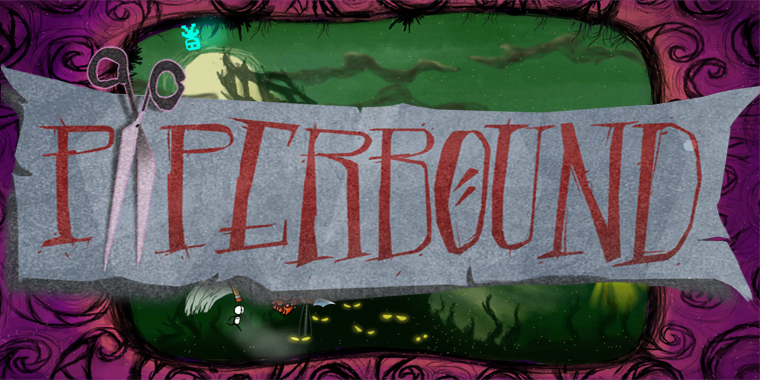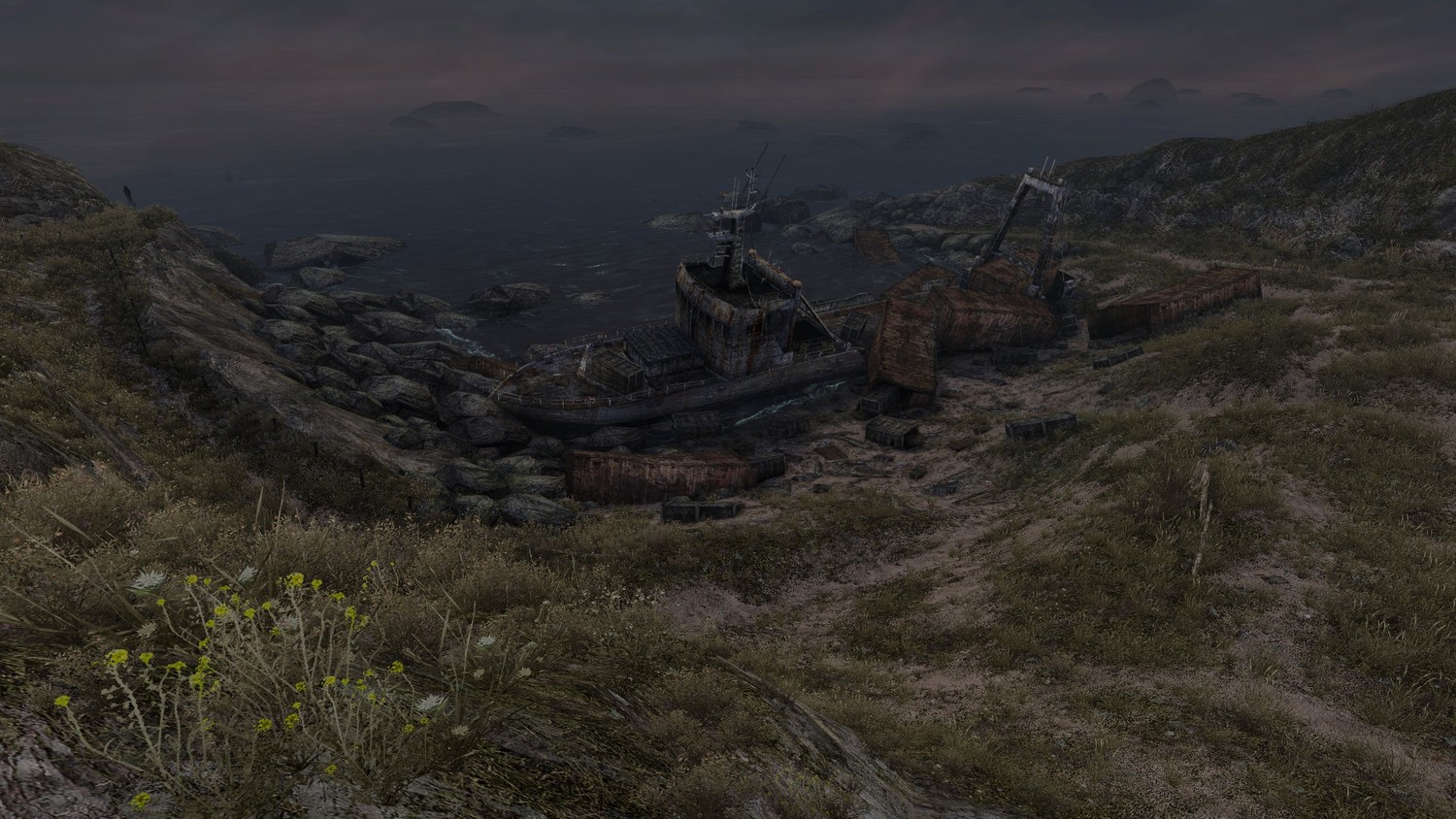
Review: Paperbound
Posted by Eric G on June 5th, 2015 | 0 Comments | Tags: Paperbound
My favorite strategy for consuming media of any form is to go in completely blind. I avoided all trailers and discussions about Intergalactic, for instance, and was pleasantly surprised by a Matt Damon cameo (among other things) halfway through the film. I received a code for Paperbound a few months back because I’m the Golden Age guy on the team. I had no idea what the game was save for the fact that it’s a 1-4 player local multiplayer game. Since then, I’ve had a few opportunities to play the game with friends. Every session burst with intensity. People leapt off of couches, screamed at the screen, and there were even a few expletives hollered during the heat of battle. As far as I’m concerned, Paperbound is a local multiplayer staple on the PS4.
If you’ve ever played VVVVVV, you’ll be able to pick up and play Paperbound without a problem. If not, the learning curve isn’t too steep. The game is an arena brawler in the same vein as Towerfall: Ascension, except with a flipping twist. Pressing the Triangle button reverses your character’s gravity. If you’re walking on the floor, you’ll be swiftly pulled toward the ceiling, where you will confidently walk until you press Triangle once more. Unless, that is, you’re decapitated by an opponent, which is a very likely occurrence. The three main attacks are a forward slash (Square), tossing scissors (flicking the right analogue stick), and flinging an area-of-effect ink bomb (holding R2 then flicking the right analogue stick). Because most of the maps are relatively small and because respawning is nearly instant, battles unfurl at breakneck pace. With all of the flying, tossing, respawning, flinging, and slashing going on on-screen, it won’t be until the match is over that you realize the sheer tonnage of information being processed by your brain at a constant rate. In ESRB terms, this game is frenetic.
Paperbound hosts a bevy of original characters along with a handful of indie heroes. Juan from Guacamelee!, Captain Viridian from VVVVVV, the Goblin King from upcoming fantastic puzzler Tumblestone, and more are playable characters. As far as I could tell, all characters have the same reach, height, etc., so there aren’t any advantages to picking one over the other. The standard Free-For-All mode contains 18 playable maps. To include only the larger ones, the map list is cut shorter for some team modes such as Capture the Quill. All of the maps are crafted in a way that allows free-flying, mind-bending movement. It’s pretty neat to realize that platforms – those things you’ve been jumping onto for ages without notice – have undersides, too!
We mostly played Free-For-All with 3-4 players, a bot filling in when a fourth human wasn’t around. The battles were fierce, for sure. Once a person reaches the set frag number (10 is default), a tear appears on the screen. The player has to jump through the tear in order to secure victory. Once a tear opens, the game enters slow-mo for a second, notifying everyone that the secondary battle – keep the leader from winning – is about to begin. I love the idea that the winner has to not only get to a certain kill count, but then seal the deal by making it through a gauntlet of players who have suddenly banded against him. The tear closes if either the leader is killed or if someone overtakes the lead. The strategy to prevent another player from winning is circumstantial, then. If you’re trailing the leader by a point, it may be better to get a couple of kills and overtake the lead. If the leader has a substantial lead, you may want to focus on camping the tear. Besides for the seemingly abstract but practically intuitive design of the game, what I like most is that each round usually crowns a new champion. Once we all got a hang of the mechanics (including strategically flinging or swatting back ink bombs and scissors), it didn’t seem like any of us had a clear leg-up. It isn’t fun to be the constant loser. When the crown switches heads every few rounds, the experience is much more inviting. It’s also rad to have a 10 point frag-fest turn into a 36 point endurance match due to constant leader-bucking.

There aren’t any technical issues with Paperbound. The game runs smoothly, even with a bunch of action consistently lighting up the screen. The soundtrack is fine. There are a bunch of battle modifiers that shake up the game a fair bit. I like the overall presentation – characters slugging it out across pages of books – but it feels a bit bare, overall. At the end of each match, small kill icons fill up under each player avatar, showing how he/she dispatched certain opponents. In the background, a complete replay of the match plays. There’s nothing wrong with this, per se, but there also isn’t any fanfare to it. No simple stats that show kills/deaths. No awards for most precise, most air kills, etc. I would’ve enjoyed a bit more content overall; more maps, perhaps, or a single-player challenge mode. It’s fun with just two, but almost entirely loses its allure if you’re alone on the couch. As it stands, the game is a must-own if you have a consistent group of 3-4 players.
A copy of this game was provided by the publisher for review purposes. For more info on our review policy click here.
General Info
- Developer: Dissident Logic
- Publisher: Dissident Logic LLC
- Platforms: PS4
- Release Date: April 2015
- Price: $9.99, £7.99/€9.99/$14.95
- Genre: Action, Arcade, Arena
- Players: 1-4 (Local)
- Ratings: Everyone 10+, PEGI 7
Score:
What I Like:
- Frenetic pacing
- Gravity swapping
- Seemingly abstract; practically intuitive
What I Dislike:
- Feels a bit bare













